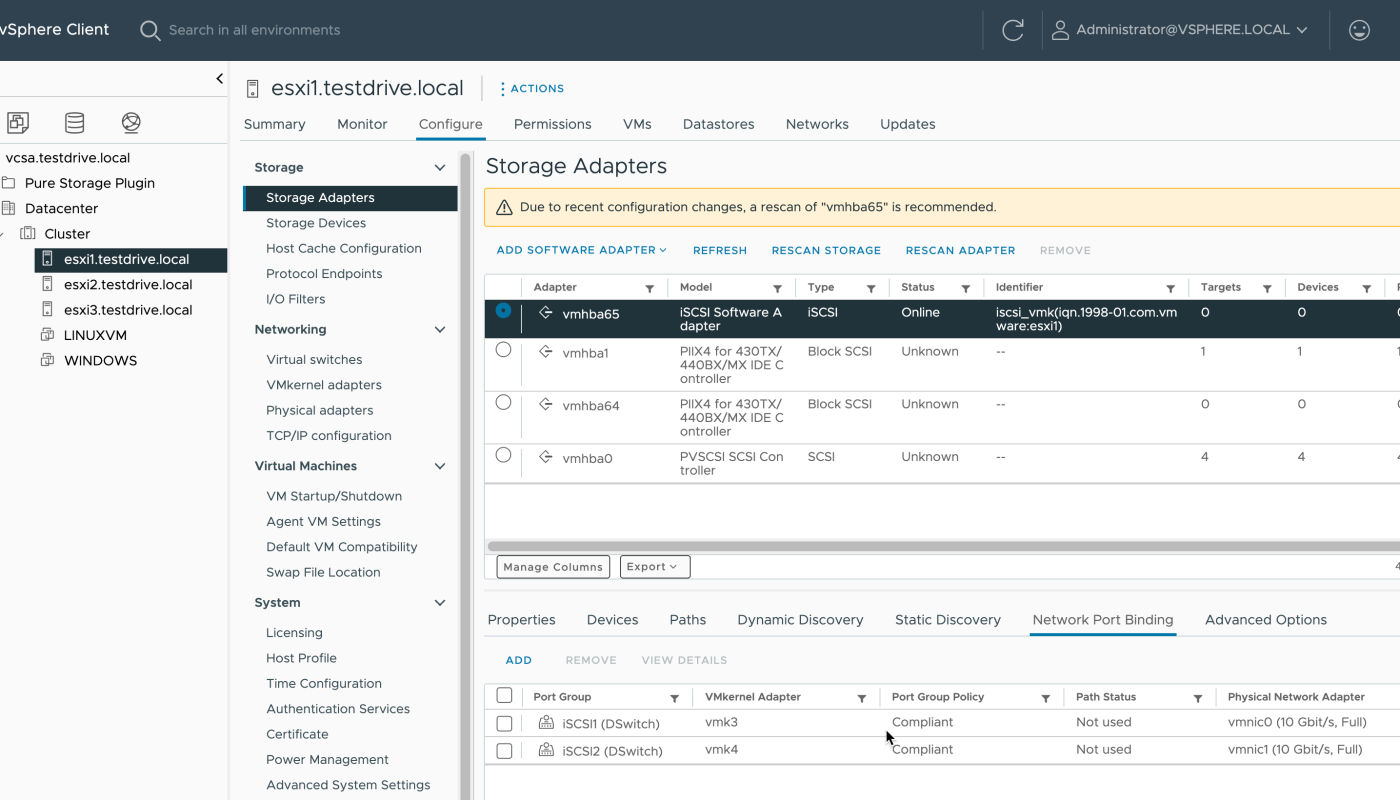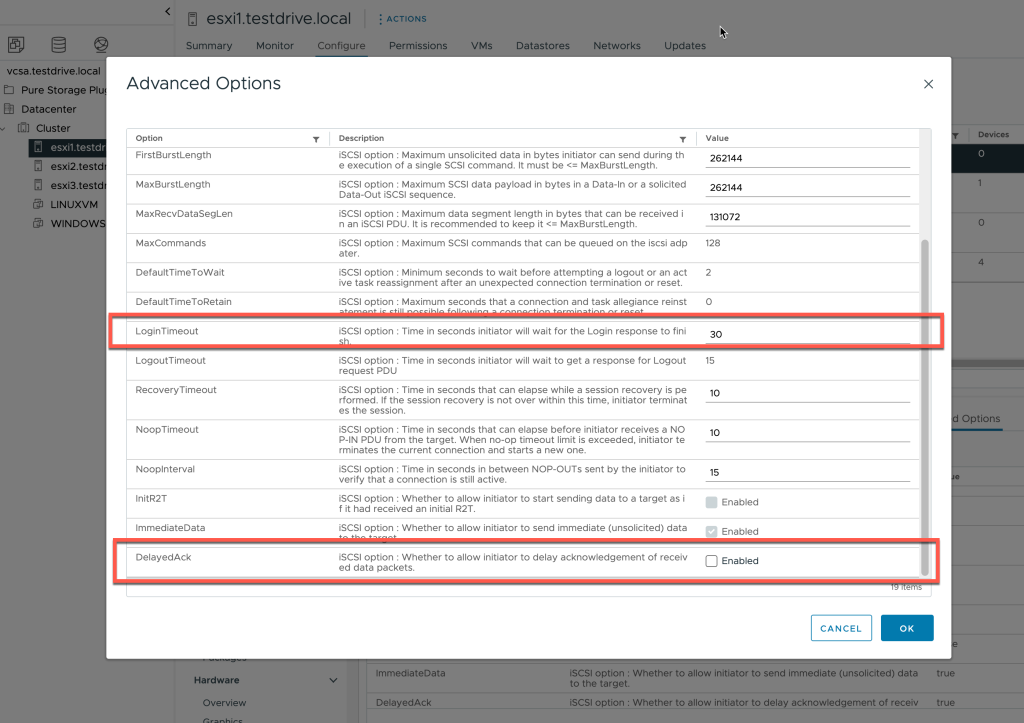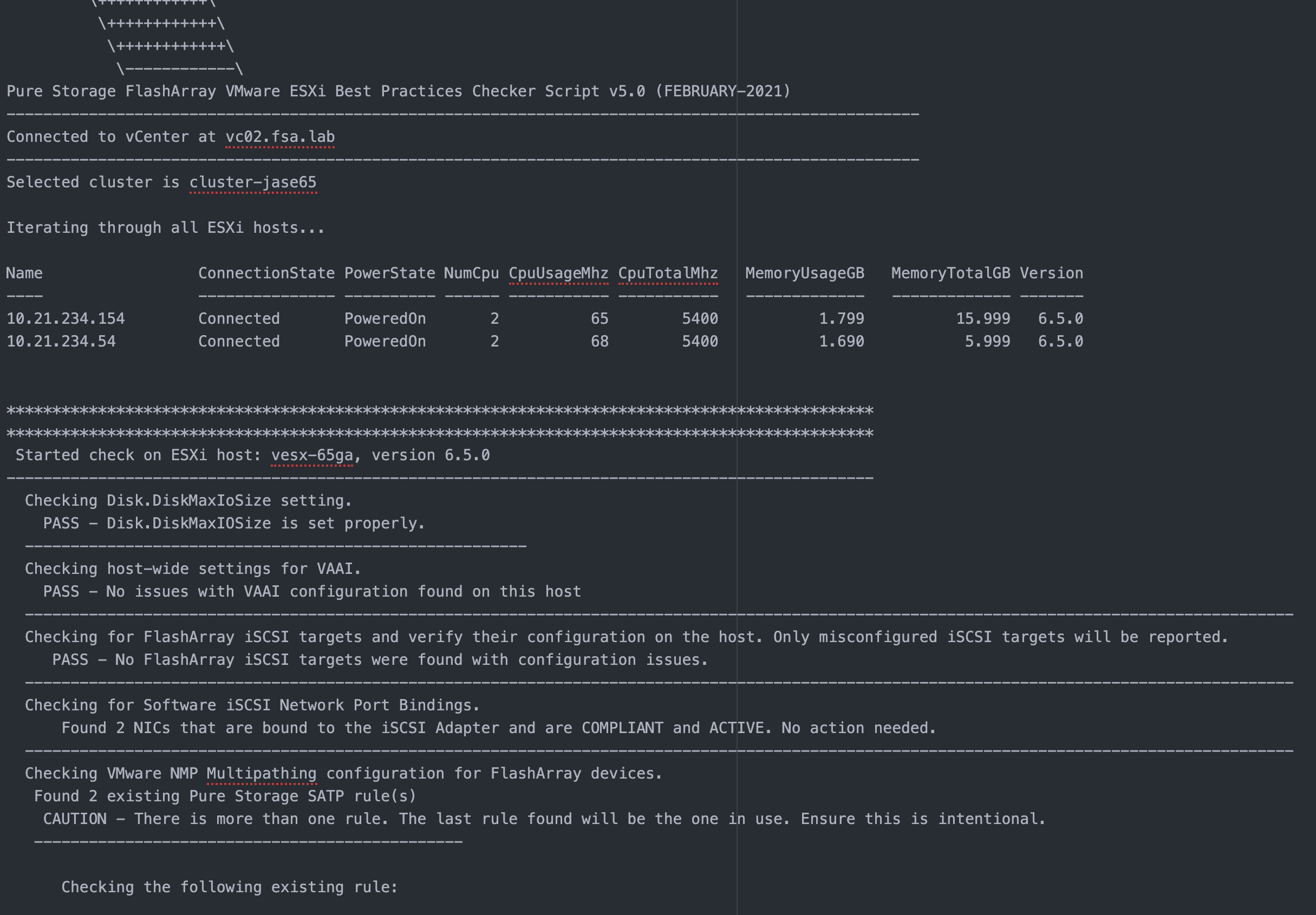In Part 1, I covered my vSAN configuration and made a reference to installing the Pure Storage Plugin.
With the plugin installed, we can proceed with configuring iSCSI on the vSAN hosts for use with FlashArray.
To use iSCSI storage, we’ll need to first add some iSCSI interfaces.
Adding iSCSI interfaces for use with FlashArray
As a former storage admin/architect I always try to keep IP storage (especially separate vendors) on different subnets. We’ll want to add iSCSI interfaces to our VDS so the vSphere hosts can communicate with that protocol on a separate network. Be certain to only utilize a single physical NIC on each VMkernel iSCSI interface.
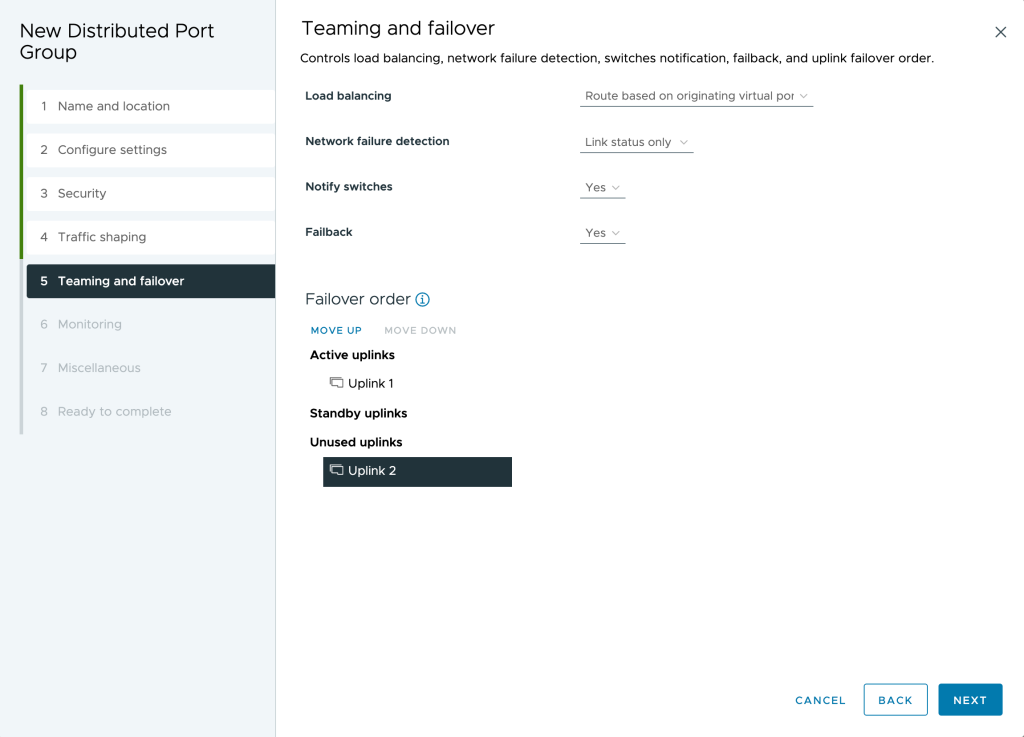
This will give us the ability to employ Port Binding appropriately when we’ve set up the iSCSI Software Adapter.
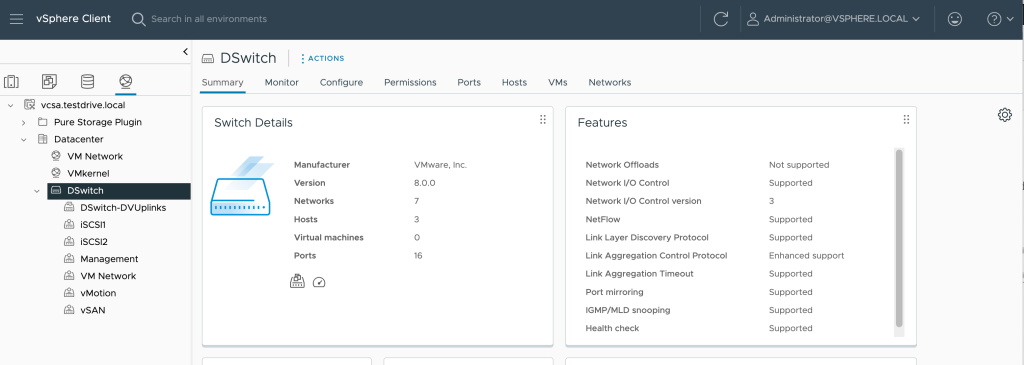
We’ll then need to create VMkernel interfaces on the hosts on the network that Pure is presenting iSCSI traffic from. We can see this network from the FlashArray GUI.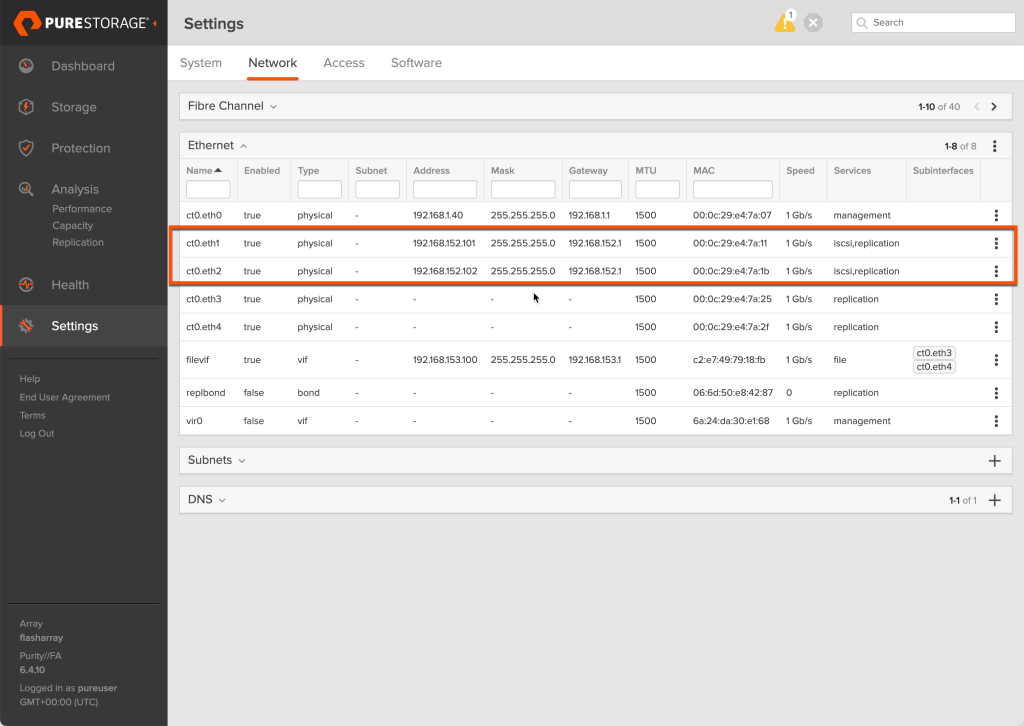
Now create 2 iSCSI VMkernel interfaces to use iSCSI storage presented from FlashArray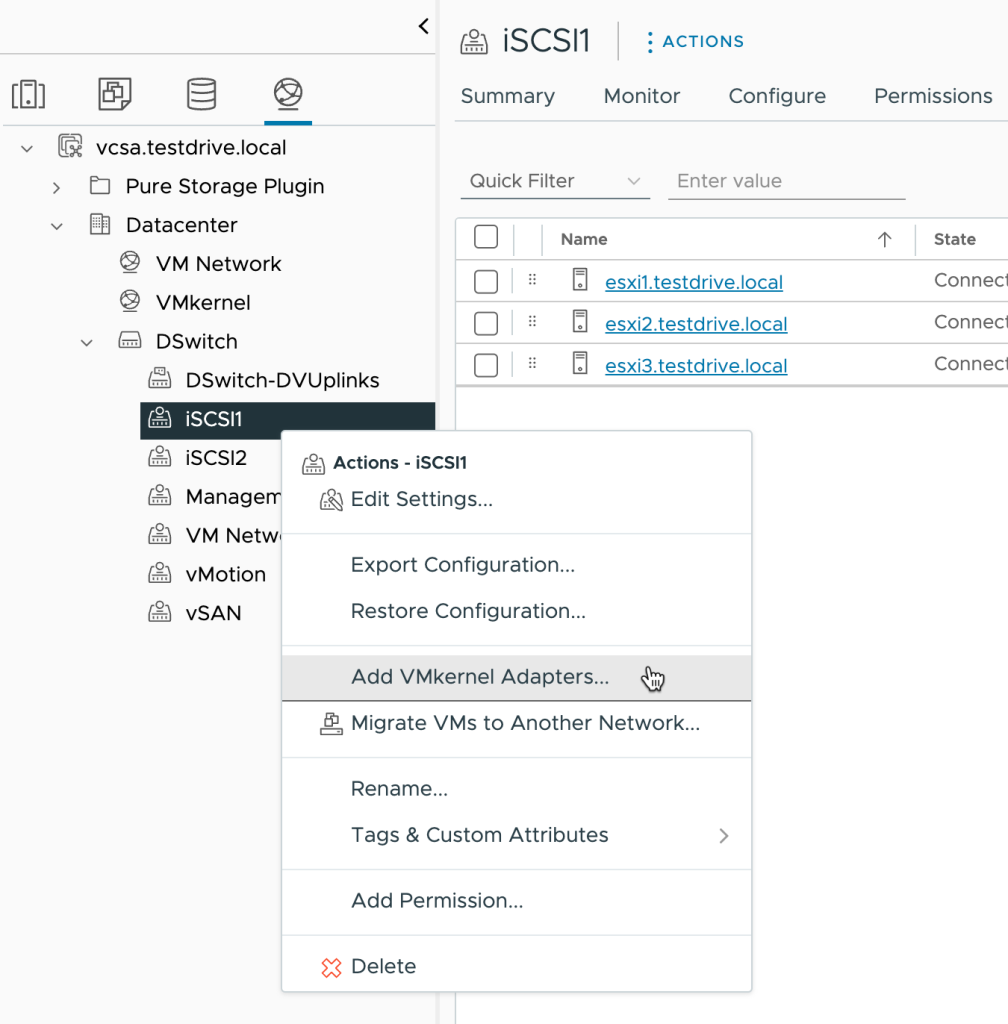
We’ll do this for iSCSI1 and iSCSI2 VMkernel interfaces so we align with VMware iSCSI best practices.

Configuring iSCSI Using the Pure Storage Plugin for VMware vSphere
The Pure Storage Plugin makes it very easy to configure iSCSI for use with FlashArray. In fact, iSCSI need not be already configured on your VMware hosts. Once the Pure Storage Plugin has been deployed and a FlashArray has been registered, a few clicks can configure your hosts to connect to FlashArray with iSCSI.
Right click on the vSAN Cluster, choose the Pure Storage Plugin menu, and select Add/Update Host Group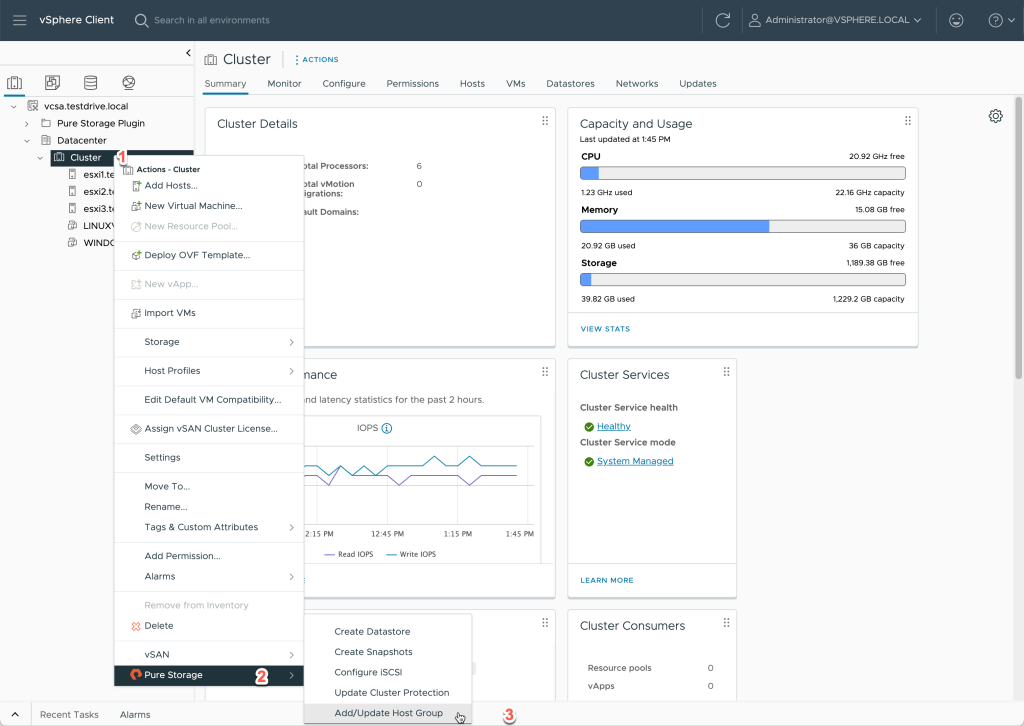
The wizard will provide the opportunity to create the host entries on FlashArray, assign them to a Host Group (construct similar to a cluster), as well as create the initiators on each host.
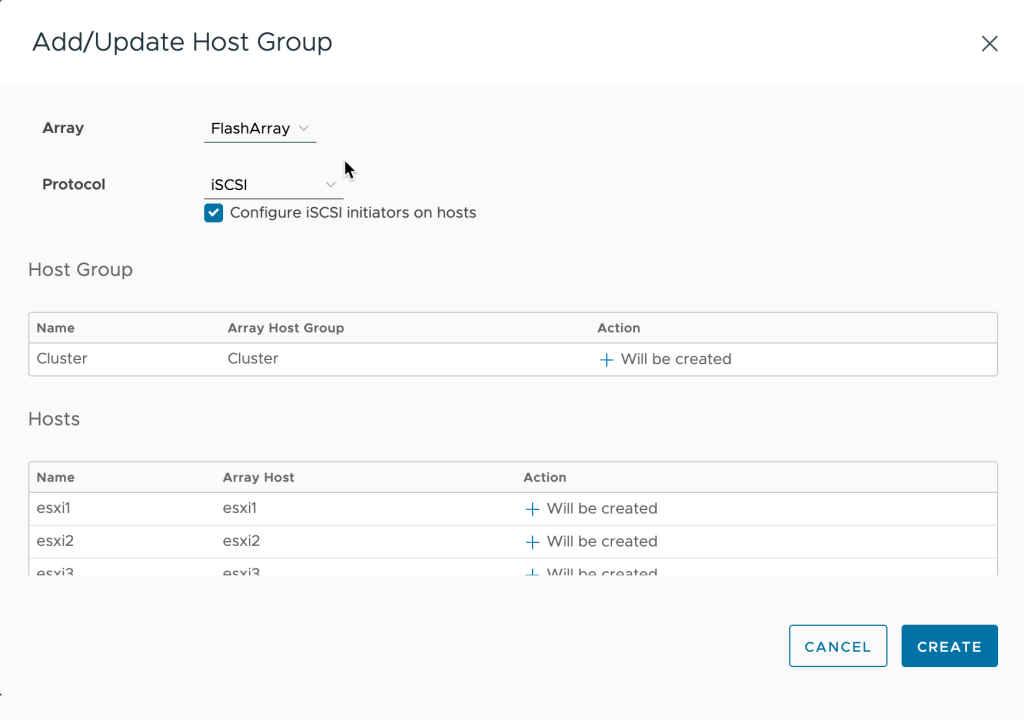 *Note: When using the FC protocol, the same process will create FC host entries/host group on the FlashArray.
*Note: When using the FC protocol, the same process will create FC host entries/host group on the FlashArray.
When completed, we’ll see the hosts on FlashArray
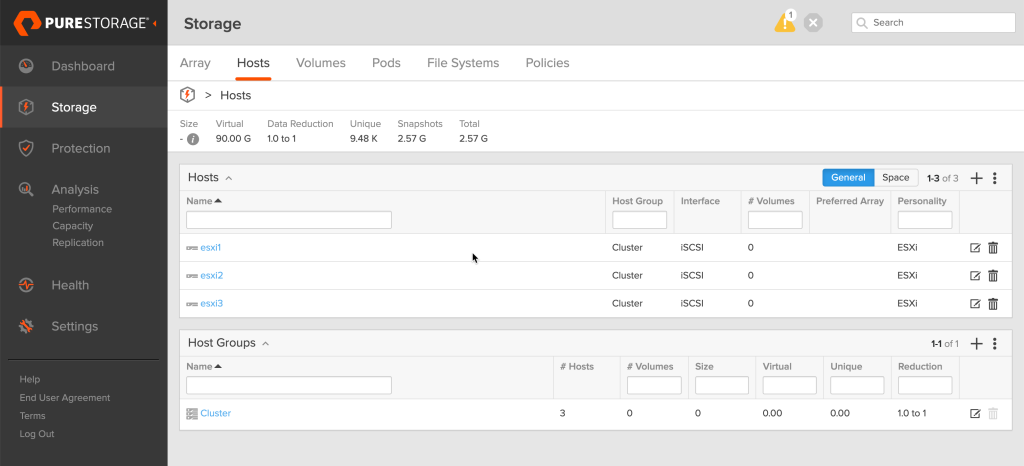 This will also configure the iSCSI Software adapter on the vSAN hosts in part. The initiator will be created on each host and the dynamic targets will be created.
This will also configure the iSCSI Software adapter on the vSAN hosts in part. The initiator will be created on each host and the dynamic targets will be created.
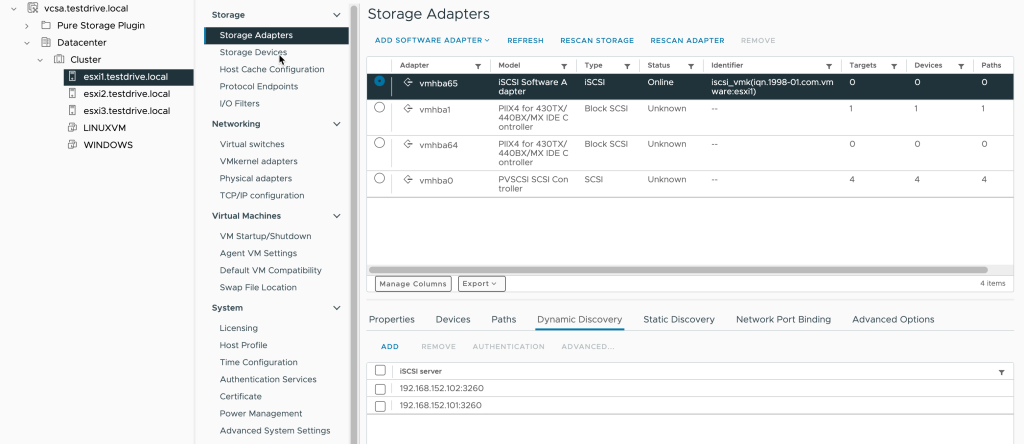
The Pure Storage Plugin does not make configuration changes to Network Port Binding or to the Advanced Options for the iSCSI Software Adapter, as these could interfere with existing iSCSI configurations.
Network Port Binding is typically used in situations where a single IP space is used for iSCSI (like in my configuration).
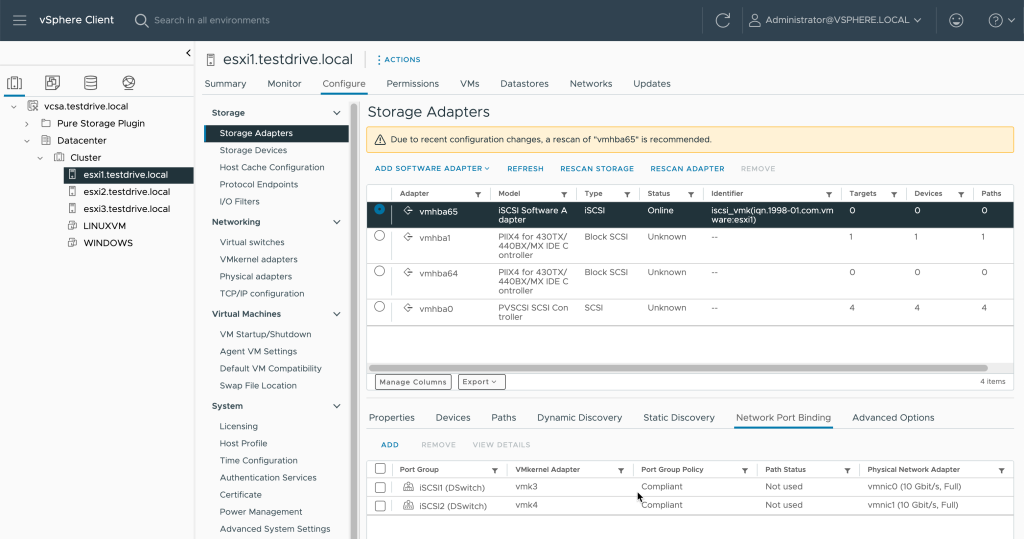 iSCSI Port Binding is only possible for VMkernel interfaces that only have a single active physical NIC attached (as in the illustration above).
iSCSI Port Binding is only possible for VMkernel interfaces that only have a single active physical NIC attached (as in the illustration above).
A couple of Advanced Options that we recommend are disabling DelayedAck as well as the setting the LoginTimeout to a value of 30 from the default of 5.
Keep in mind that changing these advanced options can be set at any time but will only take effect after a host reboot.
Adding an iSCSI Pure Storage Volume to vSphere as a Datastore
Using the Pure Storage Plugin context Menu a VMFS Datastore can be added. 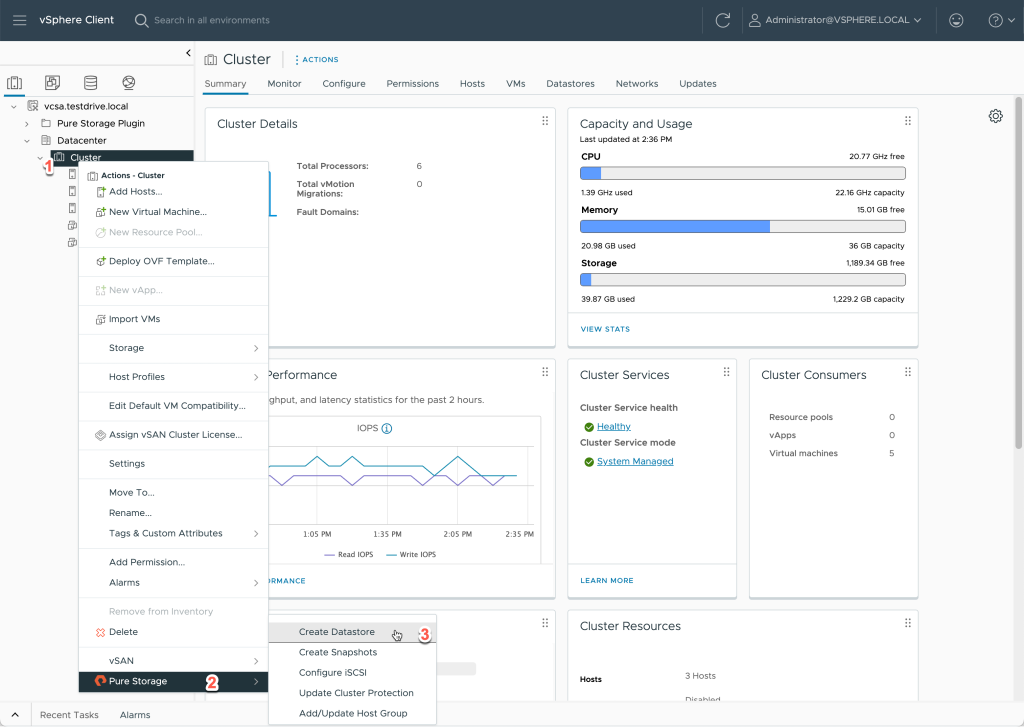
Select VMFS and proceed through the wizard.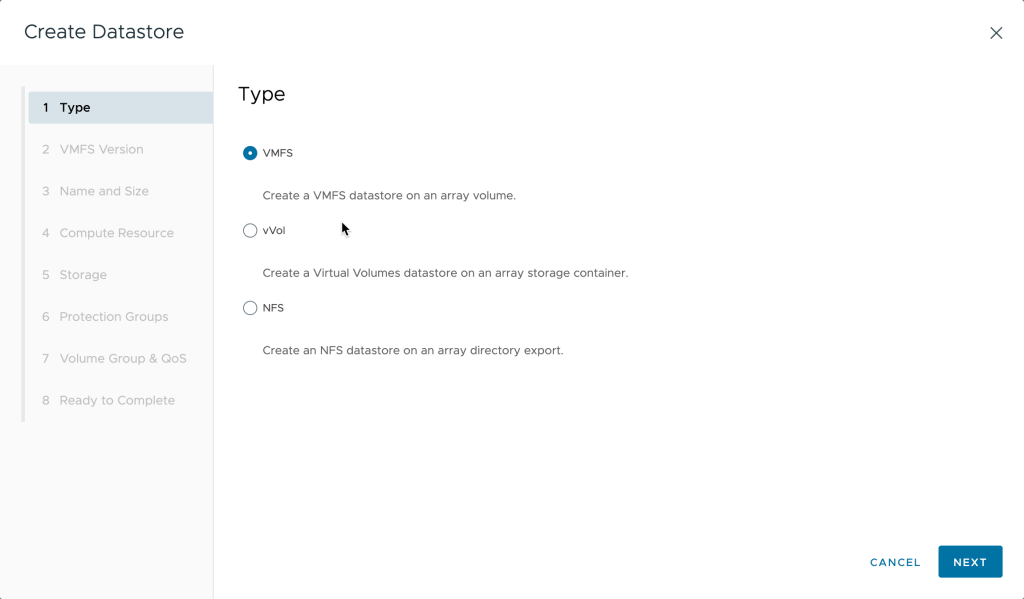
I’m not going to go into detail of the wizard process, as it is covered on the Pure Storage support site.
Now a Pure Storage iSCSI datastore is present on the vSAN cluster.

Adding Fibre Channel storage is virtually identical to adding iSCSI storage, with the exception of having the FC HBA’s and the FC ports on FlashArray properly zoned in the fabric. Additionally, vSAN Ready Nodes, or VxRail appliances can support Fibre Channel HBAs.
Now that I’ve got some connectivity established between the vSAN cluster and FlashArray, in Part 3 I’ll cover using Pure Storage vVols with vSAN.

